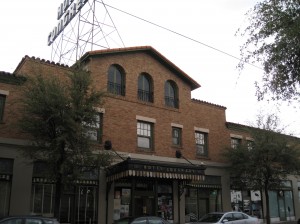The Home Valuation Code of Conduct and how it impacts Tucson real estate is also a concern of Tom Health, Vice President of Advocacy for the Southern Arizona Mortgage Lenders Association, Legislative Chair for the Arizona Mortgage Lenders Assocation and Director of the Arizona Association of Mortgage Brokers. Tom is guest blogger today and what follows are his comments about the HVCC.
Thanks for taking the time to shed more light on the Home Valuation Code of Conduct (HVCC). You touched upon several issues that are critical in understanding why we have to recall this policy and put in place a more meaningful method of ensuring quality appraisals.
You mention this is a “de facto regulation,” which is the perfect description. HVCC was not implemented by an agency as a regulation, or by Congress as legislation; it was an agreement between one man and two, at the time, privately held companies. The policy of HVCC circumvented standard public commenting periods and debate that would have been required if this were an actual regulation or law. The Attorney General of New York, Andrew Cuomo, threatened Fannie Mae and Freddie Mac with massive lawsuits if they did not comply with this code. The weak companies feared “tobacco type” lawsuits across the country and succumbed to the AG’s demands.
The foundation for this agreement was an investigation launched by the AG into alleged appraisal fraud resulting in values that were unrealistic, but led to huge earnings for a large national lender and their partially owned subsidiary appraisal management company (AMC). Whether the attorney general had a foundation for his threats is not known, because as part of the agreement was to keep the results of the investigation undisclosed.
Due to the implementation of the HVCC, most lenders now work with an AMC, which is an unregulated entity and is often owned, in part or in totality, by the bank for which it performs appraisals. Ironically, Cuomo’s code has led to the dominance of the very structure that prompted the investigation that led to the code.
What was intended to protect consumers from unscrupulous originators and appraisers has created a more expensive process for the borrower and created a lower quality and less reliable product. You accurately point out that the cost of a report has increased, but the compensation to an appraiser has decreased. Quality appraisers are unable to work for the reduced income and therefore, orders go to less experienced practitioners. Many times, the appraiser is brought in from areas outside of the market and is unfamiliar with trends and characteristics of the property being inspected.
While many are focusing on the inaccurate values being returned, the emphasis should be placed on the poor methodology of those reports rather than the value itself. Anecdotal evidence is pouring in that, appraisers are brought in from areas outside of the market and are unfamiliar with trends and characteristics of the property being inspected. Two reports were forwarded to me from a listing agent representing a property in a historic part of Tucson. The first report was well below the agreed upon sales price and used comps that were not representative of the property’s historical characteristics. The sale fell through. Seller reduced price, a new buyer was found, a new lender was used, and a new appraisal was performed. This report used comps more akin to the property being inspected and value came in 10% above ORIGINAL sales price.
In addition to cost and quality, the code has presented a “portability” issue. Consumers typically pay for the appraisal at or prior to time of inspection. While the code allows the report to be transferred to another lender if the borrower so wishes and the appraisal is HVCC compliant, the reality is much different. One large national lender has a written policy that it will only accept reports completed by its wholly owned, subsidiary AMC. Any borrower wishing to switch to this lender would likely have to have to bear the cost of another appraisal. This same lender also stipulates that it will only release its reports to other lenders if the borrower is declined or counter offered on the terms of the loan they requested. In other words, if that lender wants the loan, they will not release the report even though the consumer has paid for it.
The only vocal supporter of HVCC is a professional group, Title/Appraiser Vendor Management Association (TAVMA), whose members are large AMC’s. The Appraisal Institute has supported the HVCC mission of appraiser independence, but has asked for changes. Fannie Mae and Freddie Mac are noticeably silent on the code.
There is, however, loud opposition to the bill from the National Association of Realtors, the National Association of Home Builders, the National Association of Mortgage Brokers, and many independent appraisers.
The prevention of appraisal fraud and coercion has to be eliminated, but HVCC is a poorly planned and improper tool for the job. Congress has introduced HR 3044 that would place an 18-month moratorium on HVCC and allow regulators to create a workable solution that takes the good intentions of HVCC and melds them with practical procedures that can strengthen the industry and protect consumers.
—
Tom is with Consolidated Lenders, The Heath Team
http://www.theheathteam.com/
House Bill 3044:
http://www.govtrack.us/congress/billtext.xpd?bill=h111-3044
